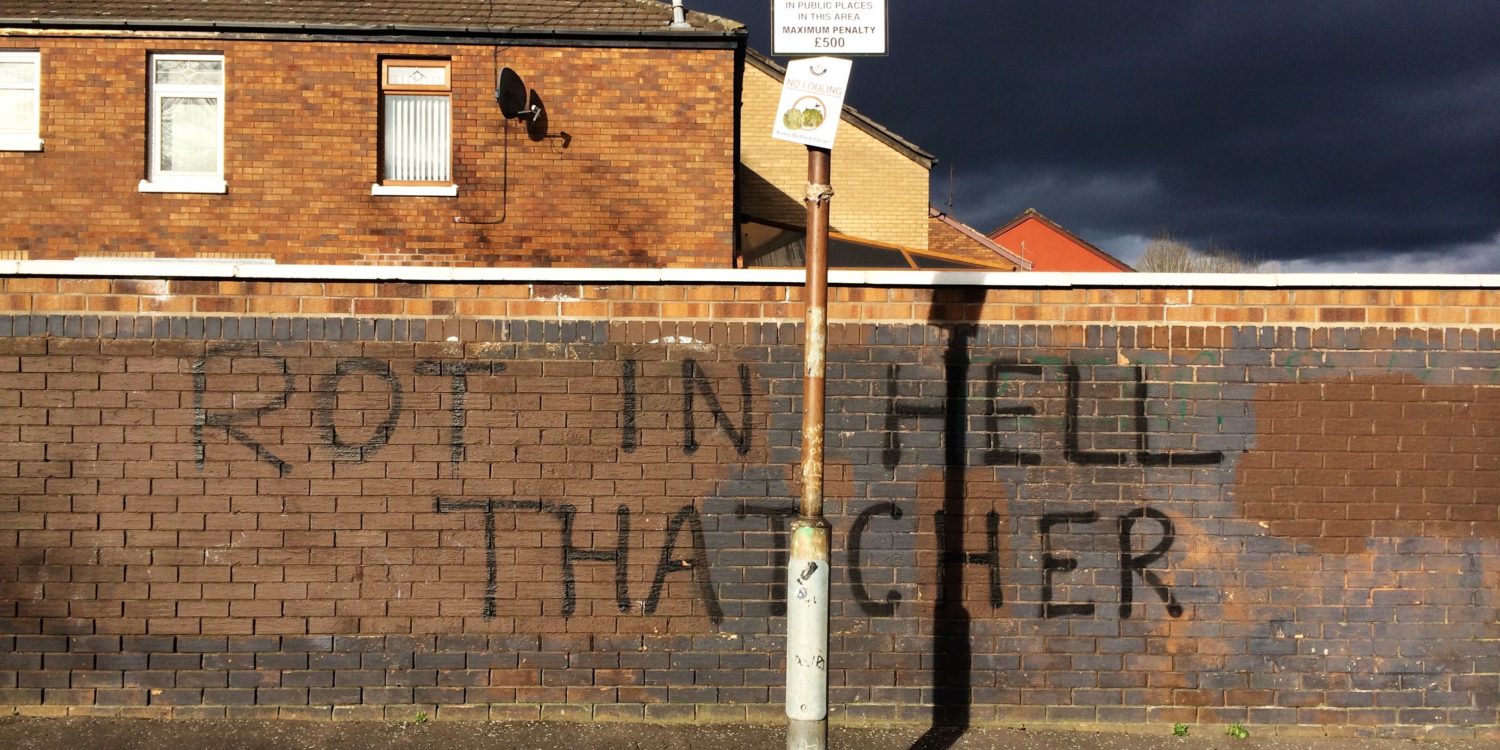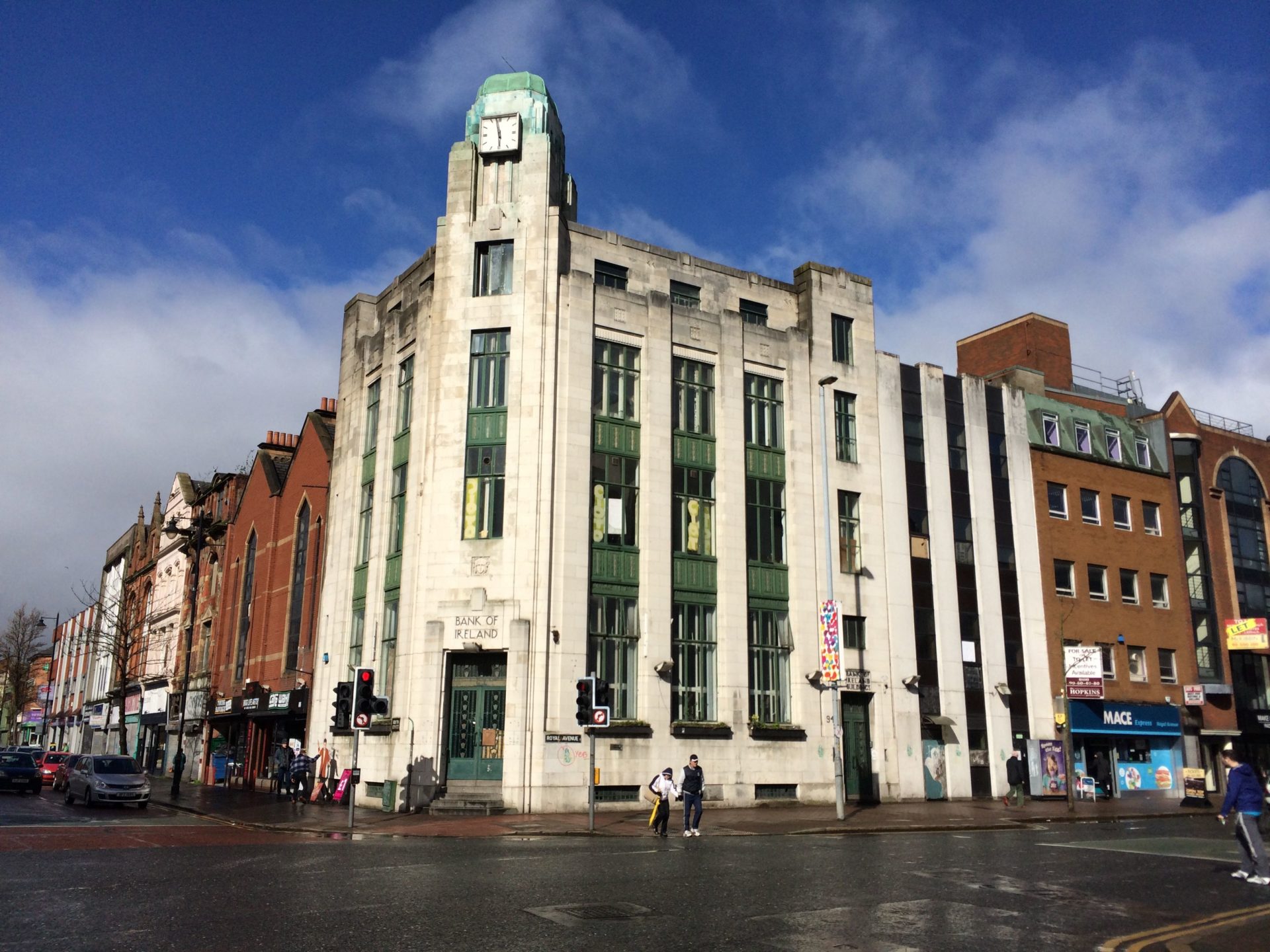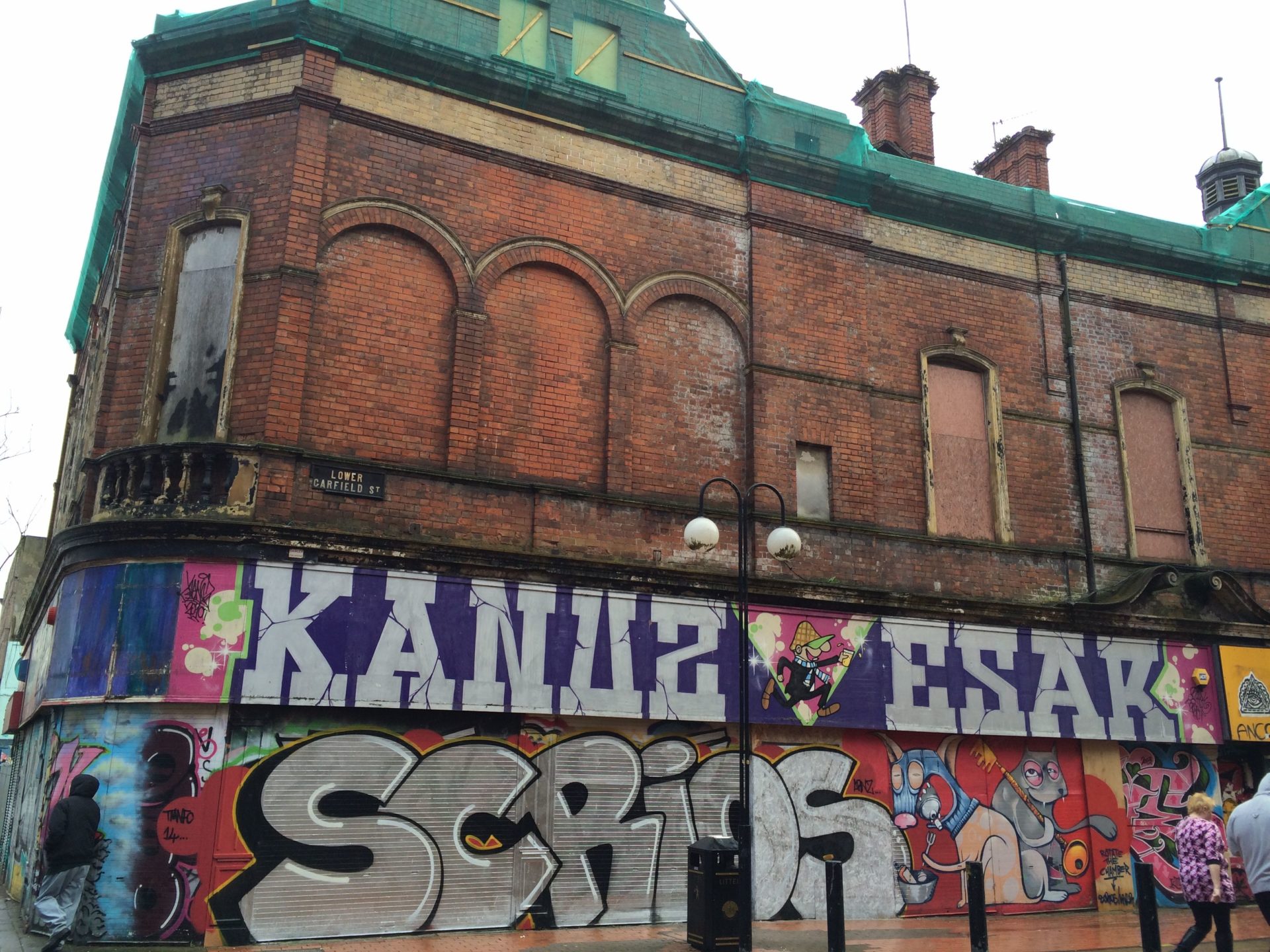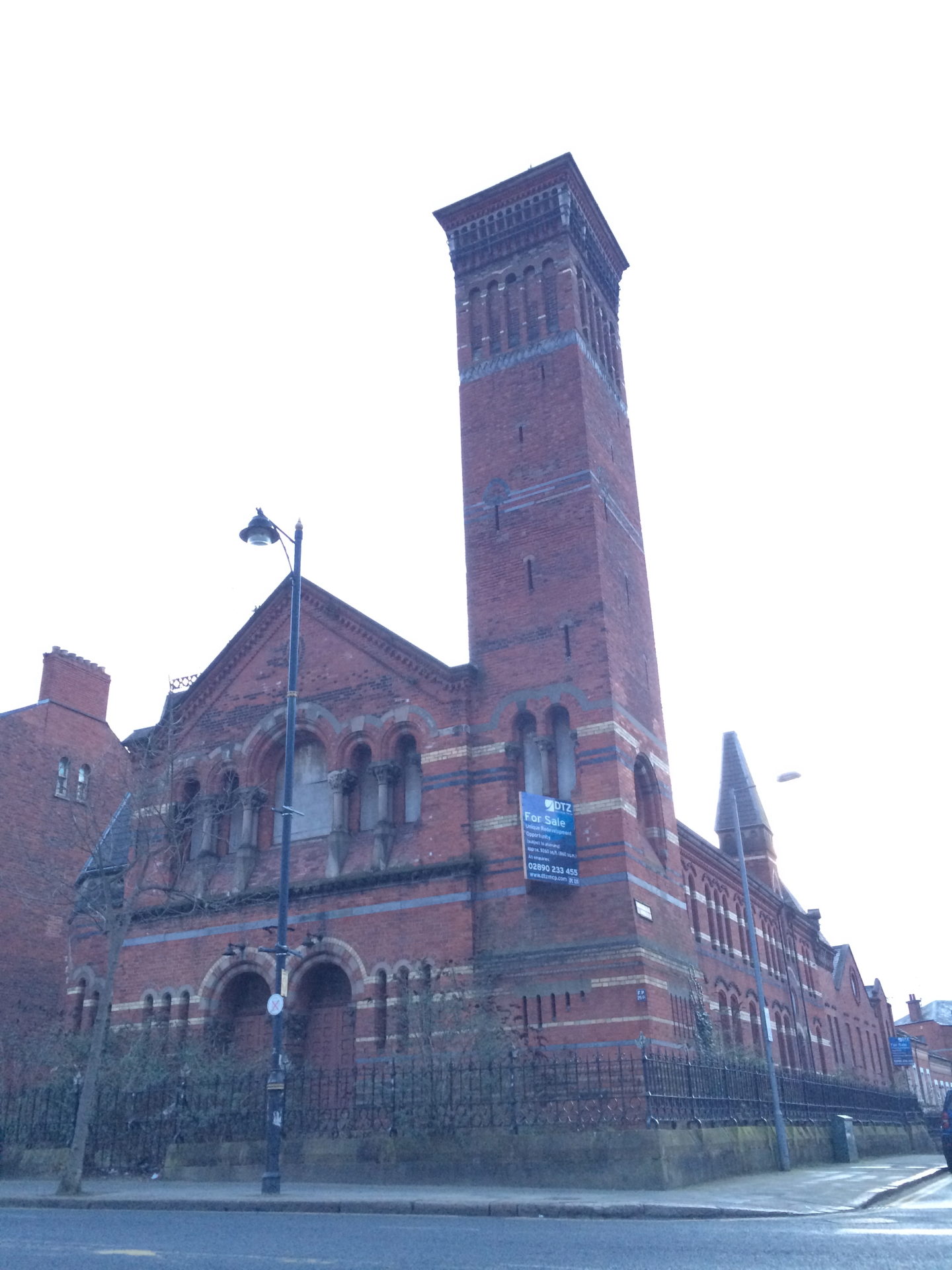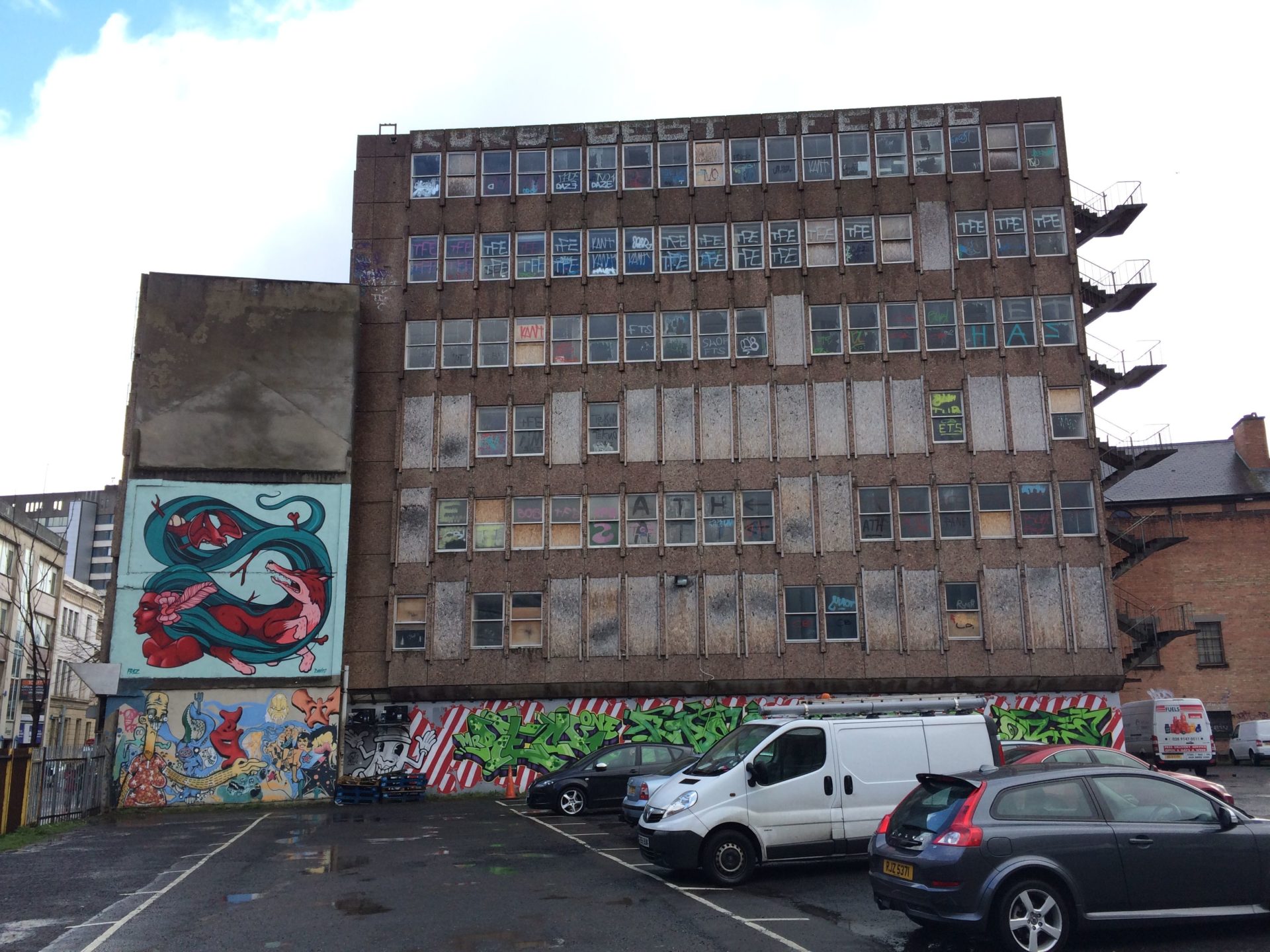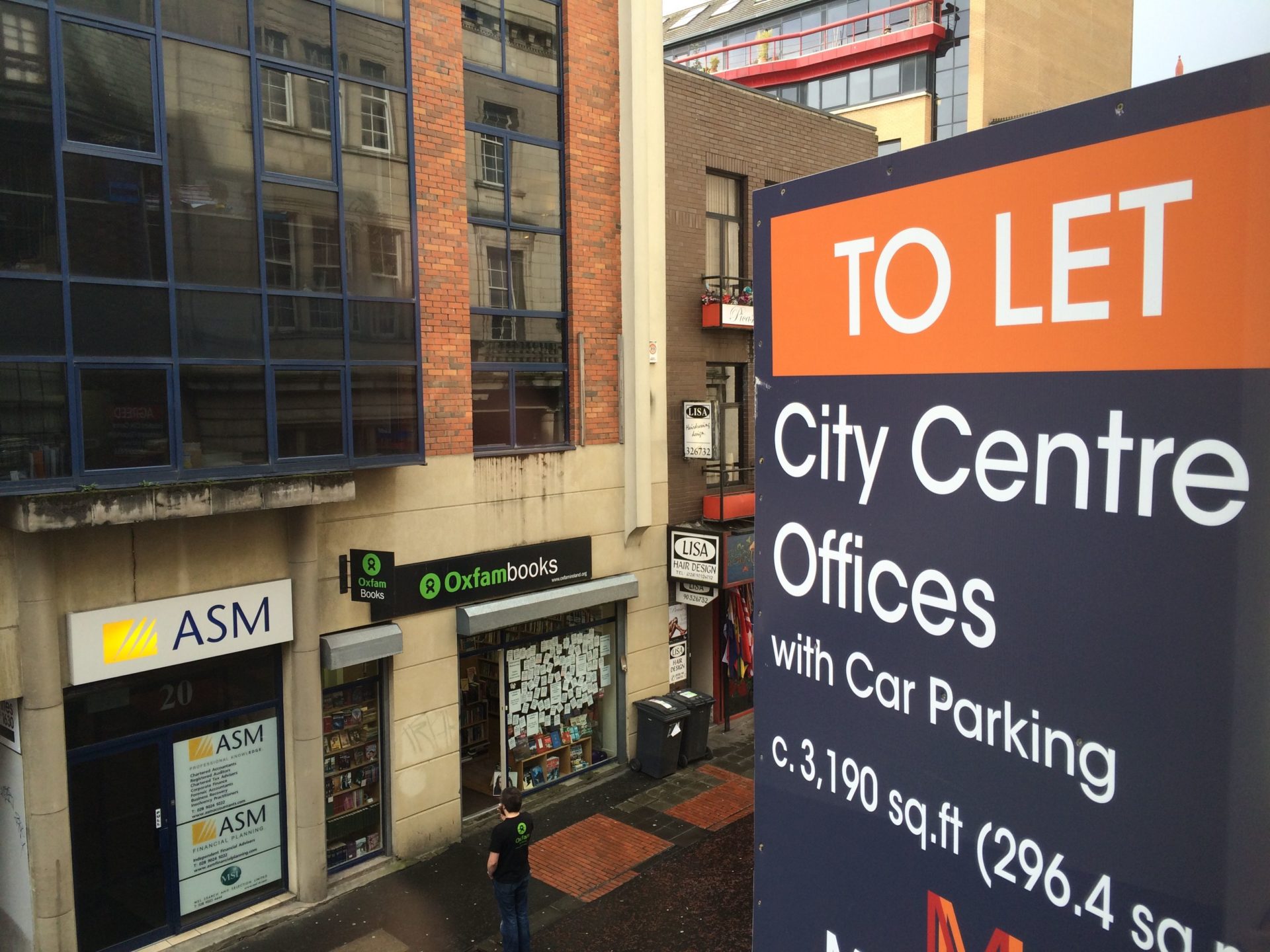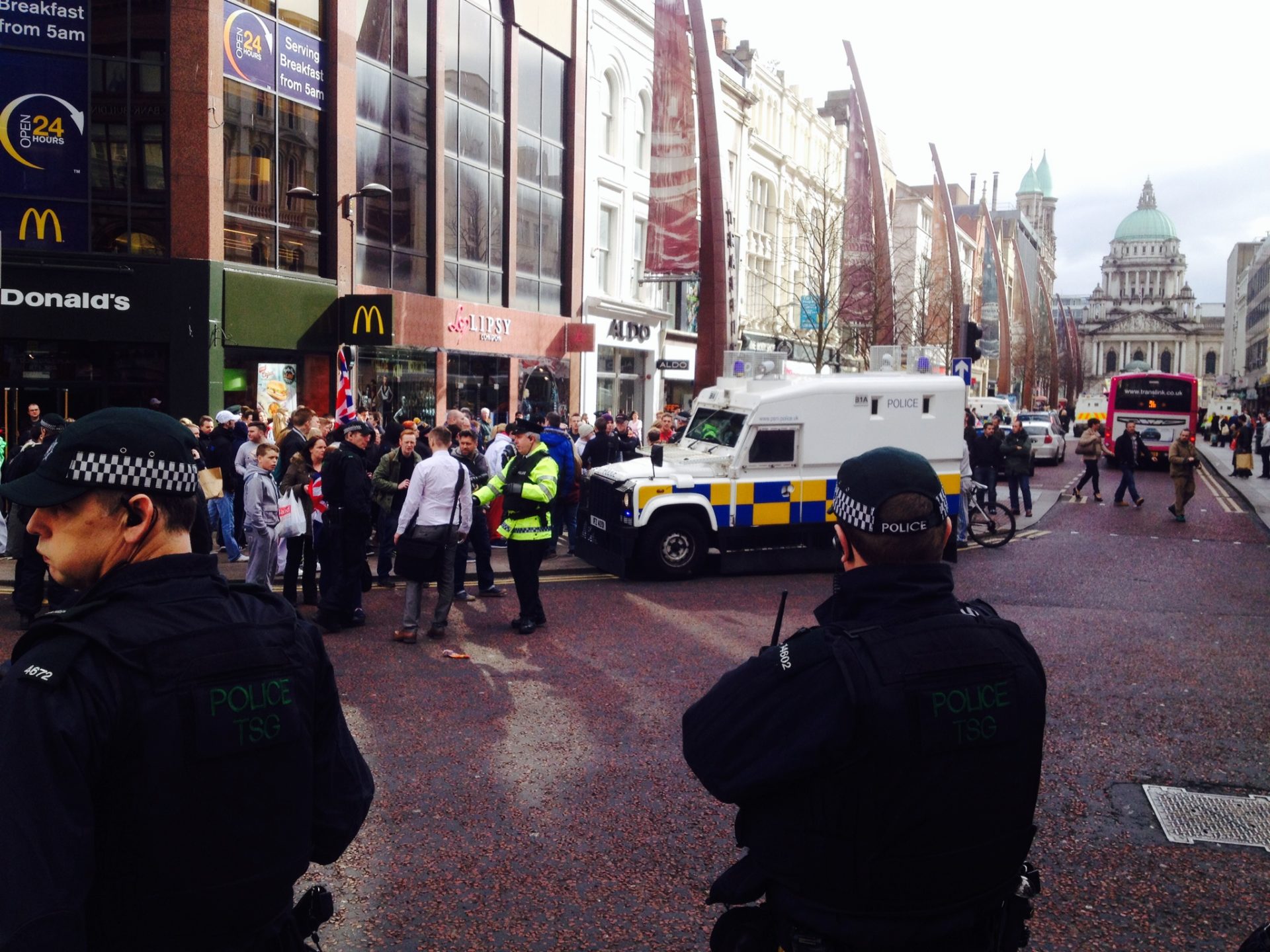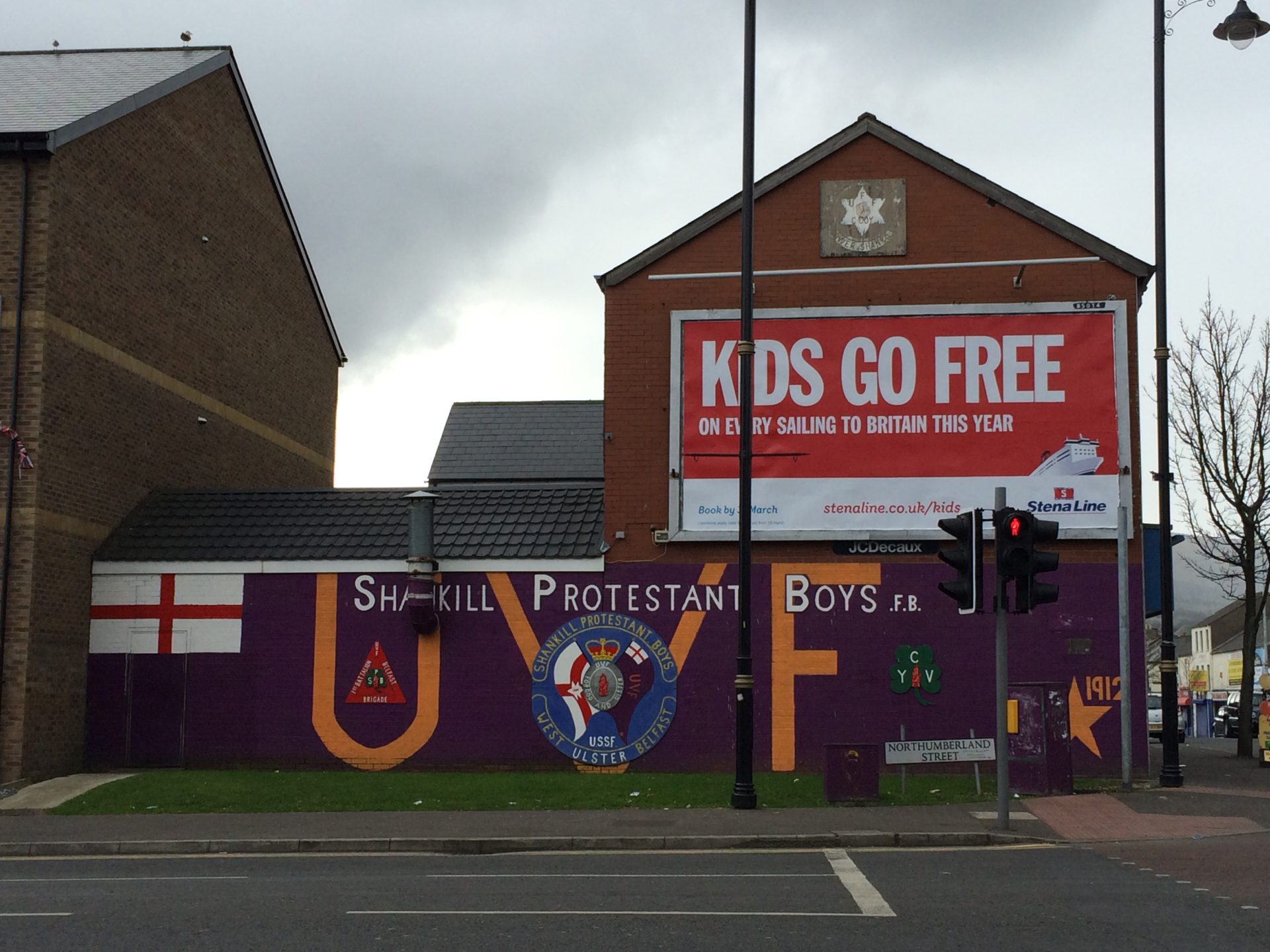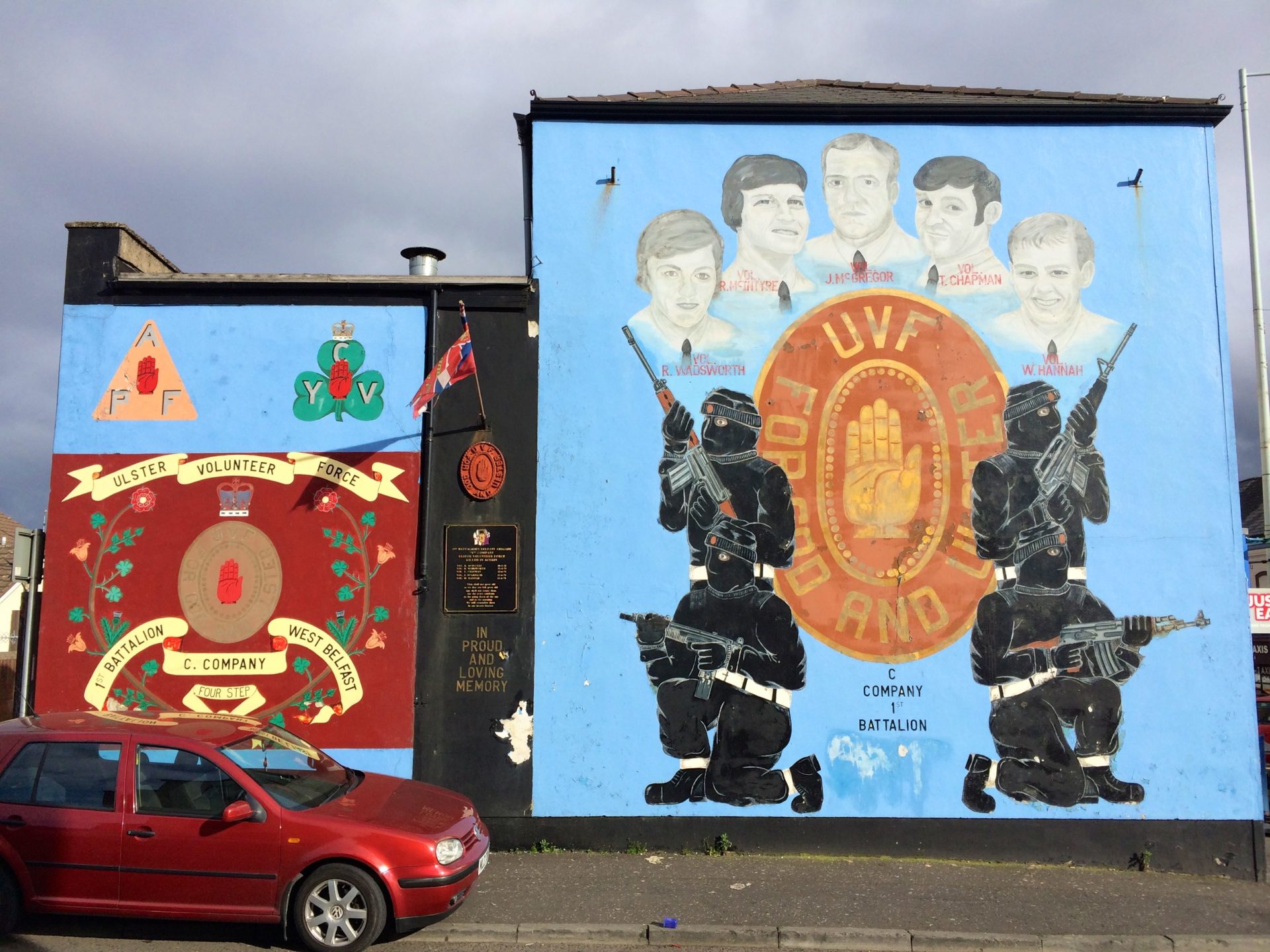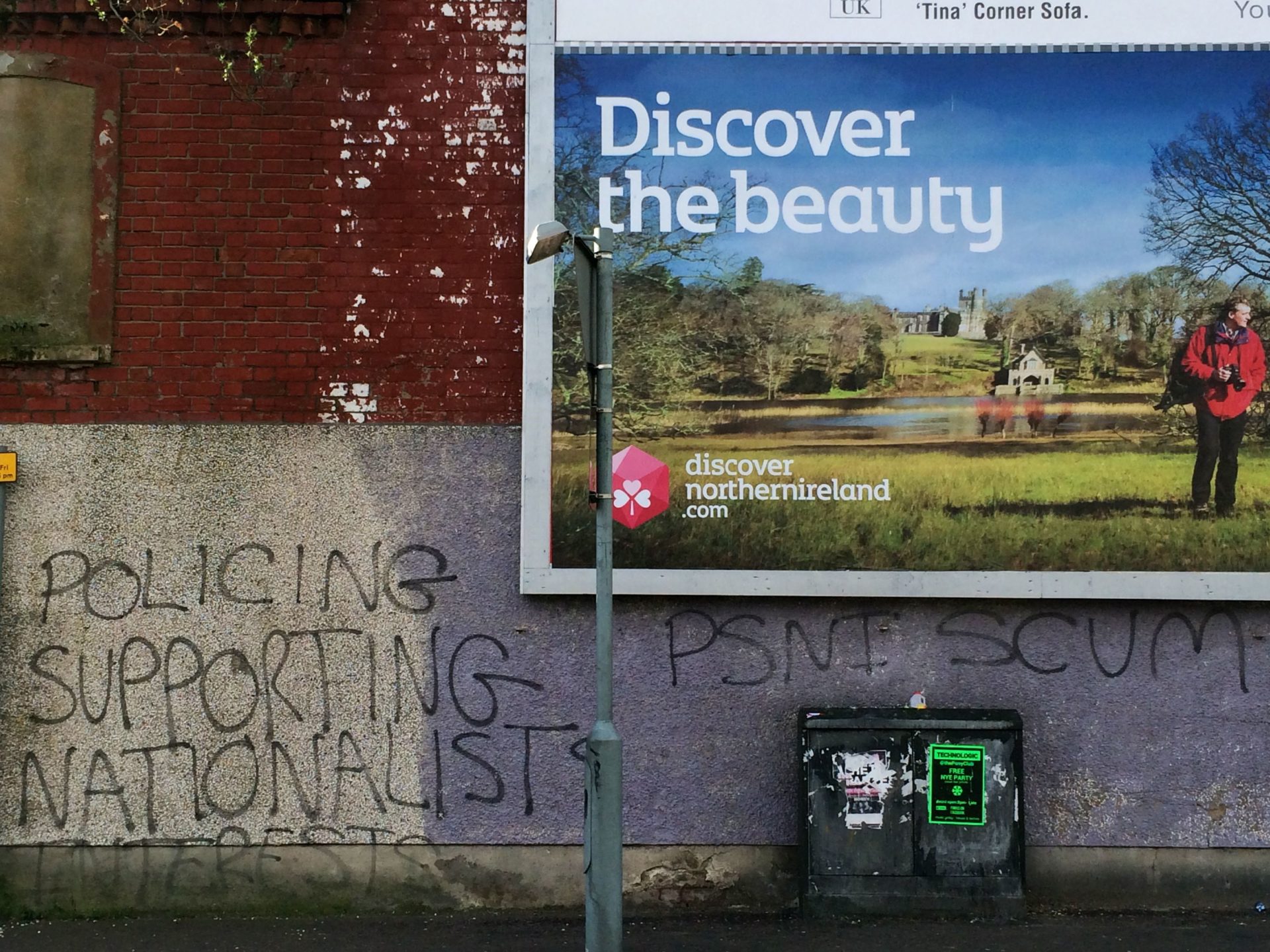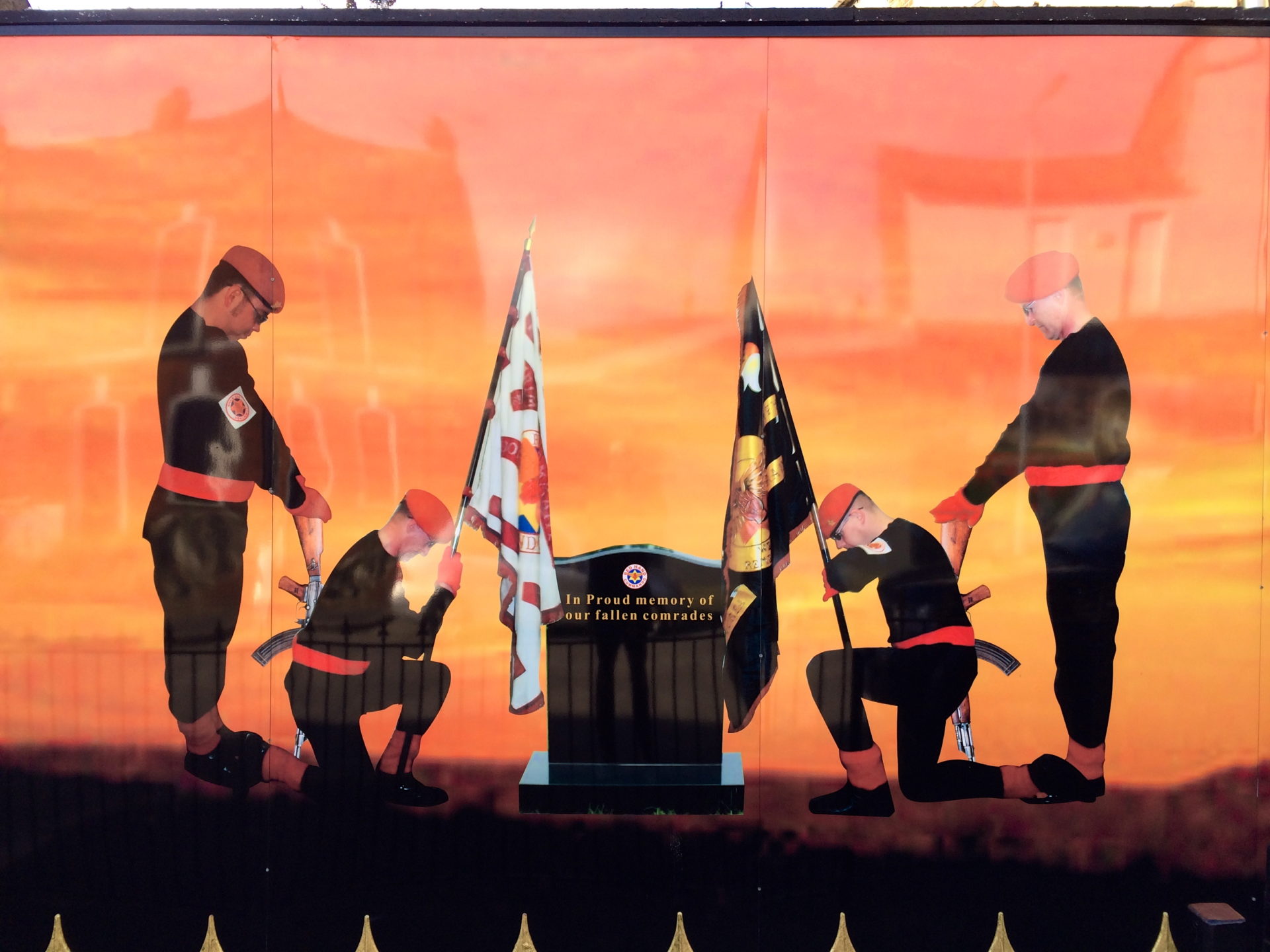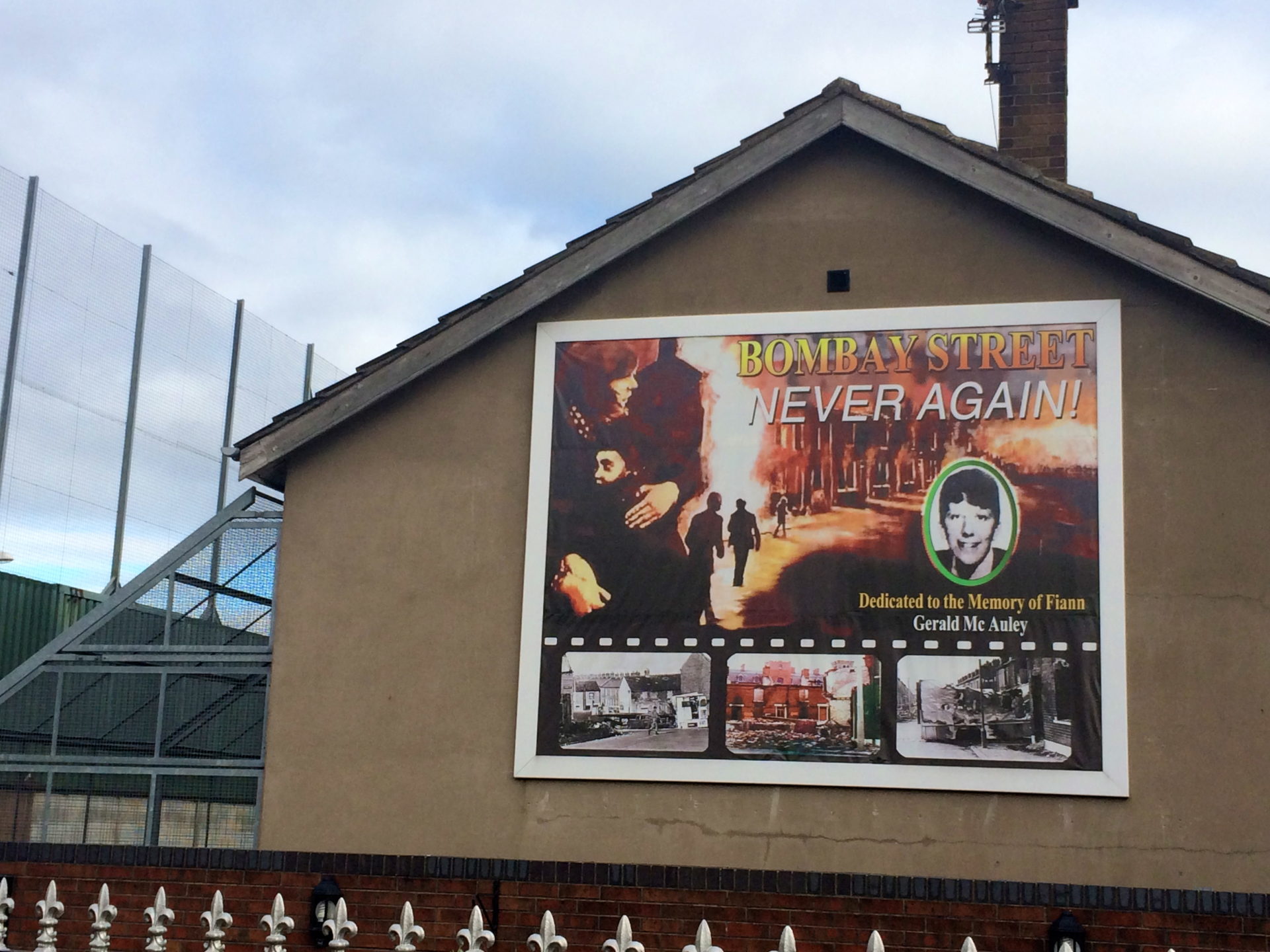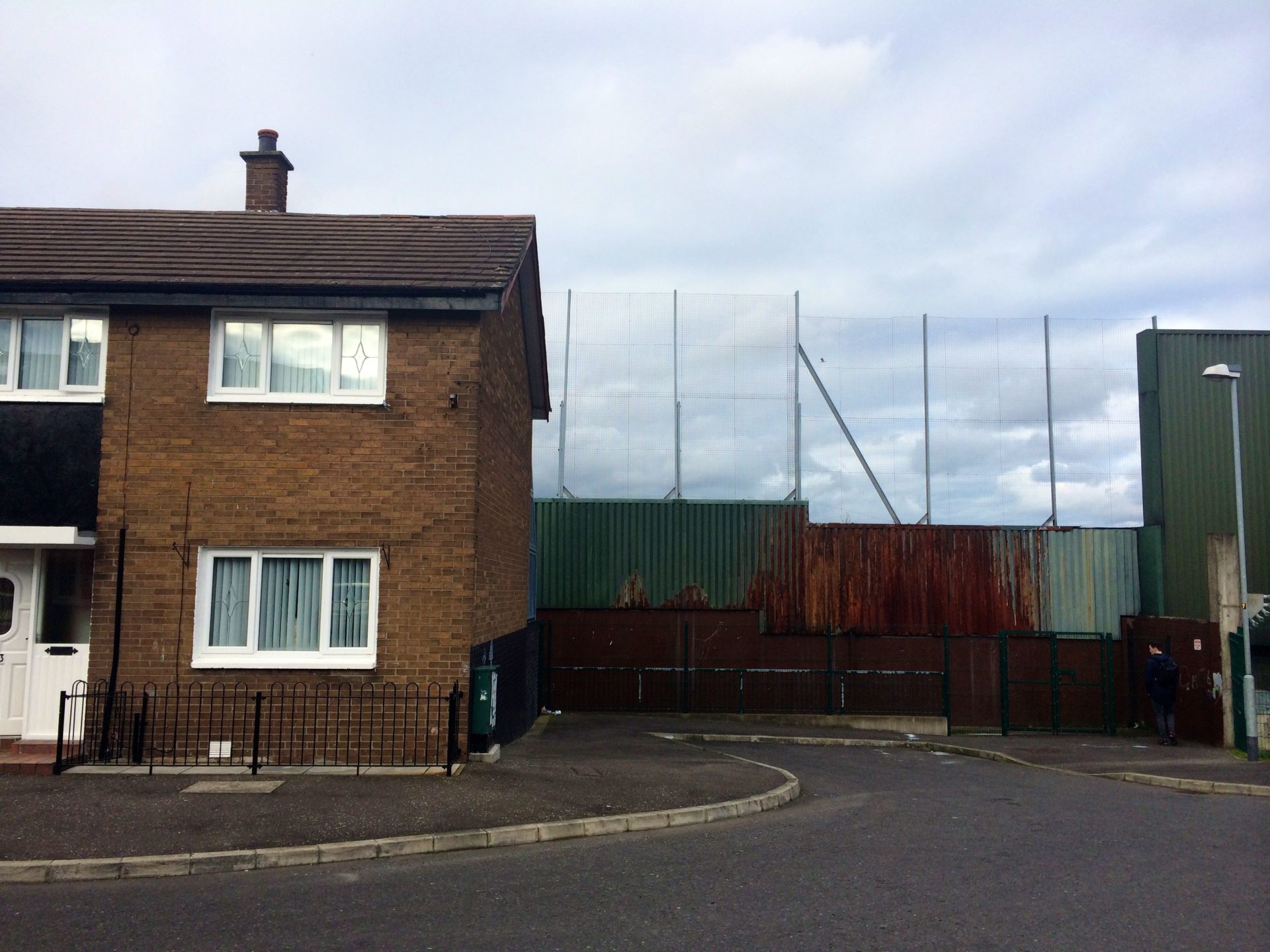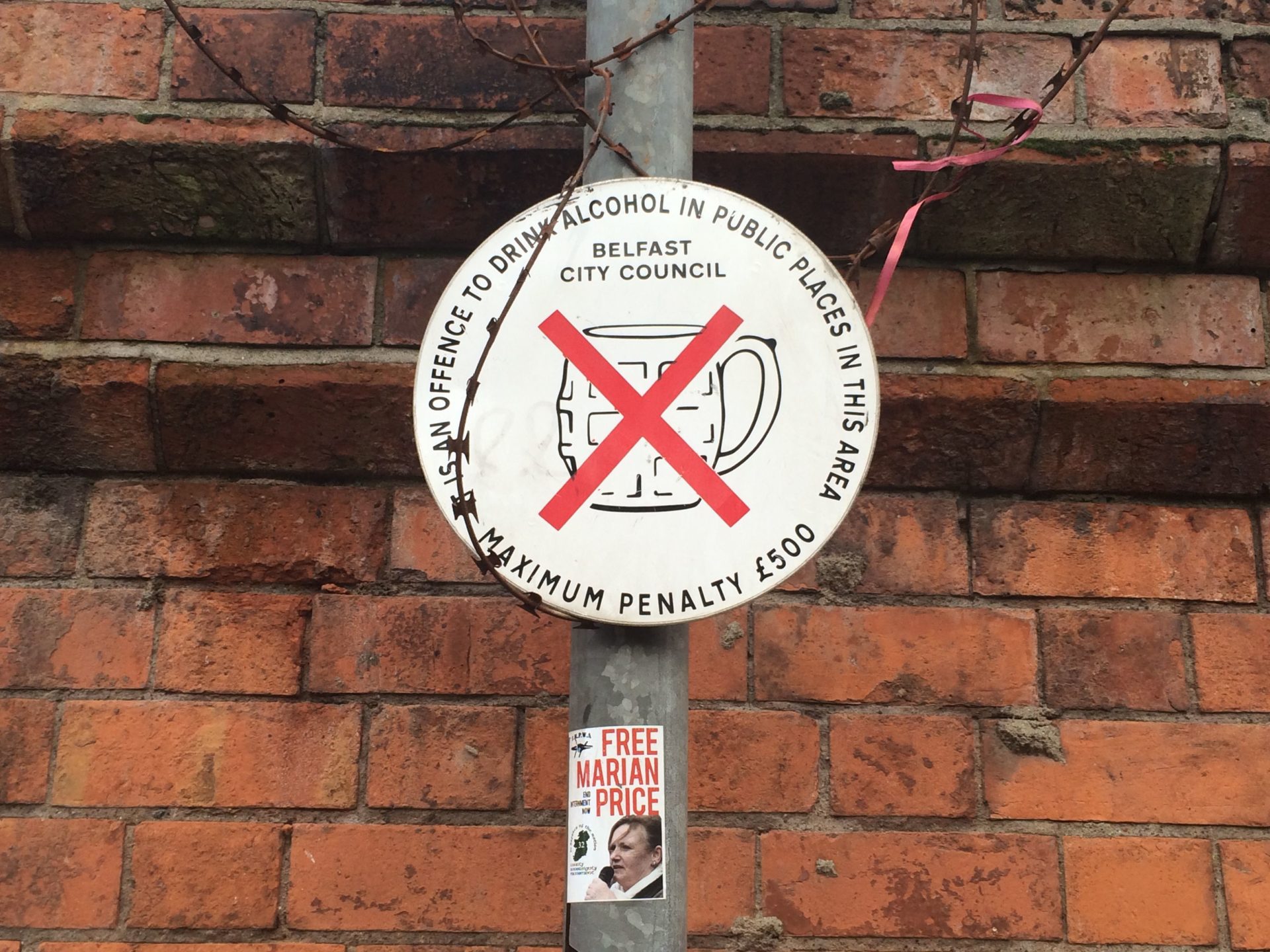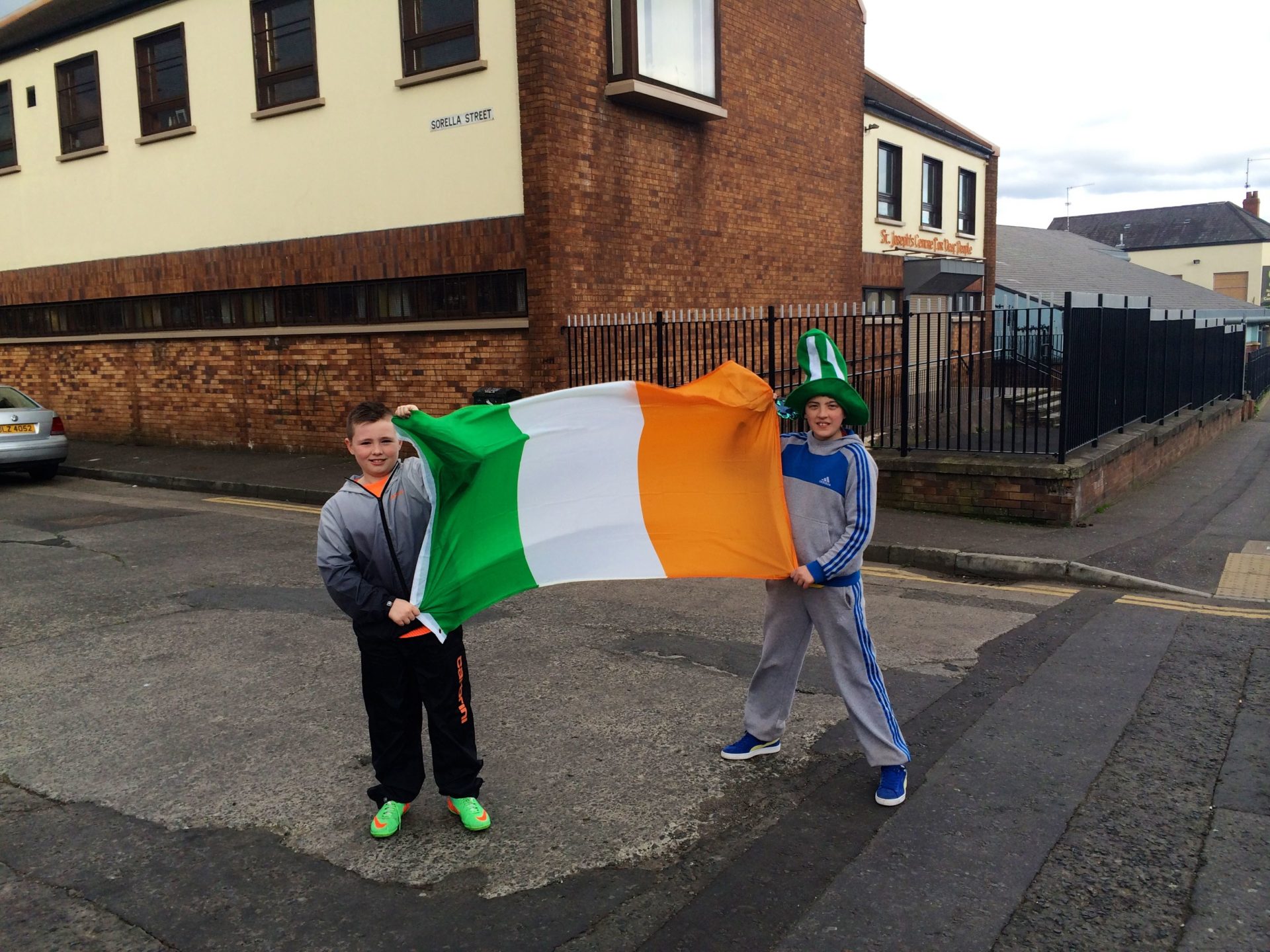Last week we visited Belfast to talk at the conference Vacant to Vibrant organised by PLACE NI. With two days to experience the city, it remains difficult to grasp for an outsider. The city suffers from several issues, including vacancy; braindrain; heavy traffic (which generates noise, congestion, unpleasant public spaces and barriers between areas); a lack of (affordable) housing in the centre even though there is a lot of empty property that could potentially be converted; and of course the tensions between Unionists/Loyalists on the one hand and Nationalists/Republicans on the other (the former being overwhelmingly Protestant and the latter mostly Catholic – culturally if not religiously), referred to as ‘the troubles’. This is a simplified explanation of a situation that deserves more nuance and explanation. This conflict situation has a severe impact on all the other problems and challenges the city is facing. These tensions overshadow all decision making and lock developments. All political layers represent both sides, making it difficult to carry out strategic and integrated plans because many discussions strand in symbolism and tit-for-tat compromises. Below we share our initial experiences of the vacancy problem and the segregated strongholds of unionist and loyalist communities.
Vacancy
Vacancy (the topic of the conference) is a serious issue for the city. There is empty commercial space everywhere in the city centre and its surrounding areas, boasting ‘To Let’ and ‘For Sale’ signs everywhere, all promising perfect development opportunities–top notch business space on great locations and endless car park facilities. The vacancy is not just confined to typologies that are generally considered undesired for new developments and reuse, also the city’s neoclassical, art deco and other widely appreciated styles are left to rot in Belfast. Here is our short impression of the issue.
Troubles
Northern Ireland’s ‘troubles’ aren’t as intense as in previous decades, but the ethno-nationalist (or is it tribal, or social-economic?) divide perseveres with highly segregated neighbourhoods, school systems and other spheres of life in Belfast. Walking around (on St. Patrick’s day) the areas where some of the most pronounced communities live showed impoverished urban environments highly charged with communal symbolism, and ‘peace lines‘ separating hostile communities.
For more background information, we recommend the VICE documentary (below) in which VICE reports from Belfast during the hottest time of the year, the days around the July 12 loyalist marches. Both the comments underneath the video and the article show that the situation is extremely complex and difficult to analyse in a constructive way. Rory Hyde’s post about Belfast also provides valuable insights, mainly into the design aspects of the troubles.
